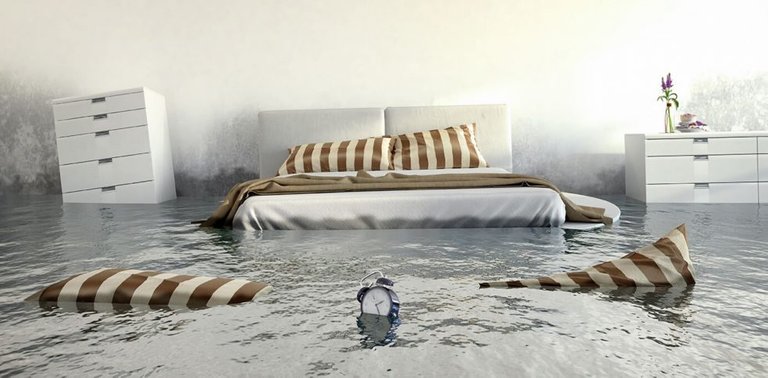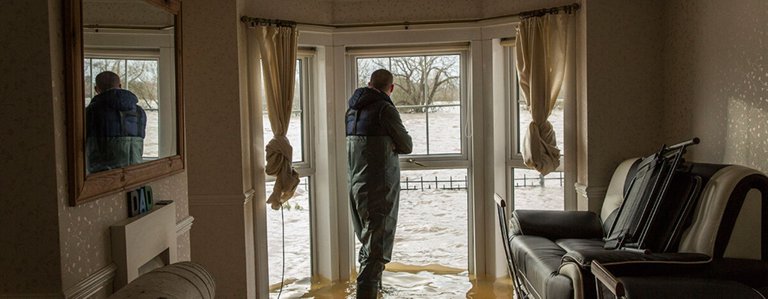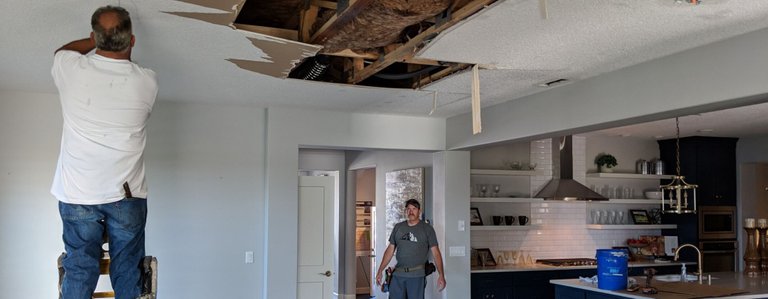by waterd16_wp | Dec 10, 2019 | Water Damage | 0 comments

What to Do When You See Water Damage on Your Cary Property
Are you struggling with water damage on your Cary property? You are in the right place! We put together everything you need to know and do if you suspect or discover water damage on your Cary property.
How Do You Treat Water Damage?
Water damage restoration is the process of removing and/or rectifying all the damage caused by a water source. If you see signs of water damage on your Cary property, contact a professional immediately. Water damage restoration companies will help you with water removal and the restoration process.
The process involves several steps:
- Removing the standing water using state-of-the-art pumps and extractors;
- Drying out the carpets and floors completely;
- Restoring all the electronics, appliances and devices if possible; and
- Disinfecting the area thoroughly to kill bacteria and eliminate mold growth.
How Long Does Water Damage Take to Show?
It can take as little as a few minutes to affect your property. Water will spread evenly throughout the entire house, soaking walls, floors, belongings and everything in its way, depending on the source location.
In the first 24 hours, water will begin to bulge and break the walls, damage your furniture, and all the metal items will become discolored or stained.

Within 2-7 days, the water will wreak havoc if left untreated. Mold and mildew will appear and spread throughout the entire home, while wooden floors, doors, and windows will warp and swell. All the metal surfaces will be affected by rust and corrosion.
If water damage is left untreated for a long time, the health risks will become considerable due to the biohazard contaminants. At that point, the restoration process will become long and costly.
What Type of Water Damage Is Covered by Homeowner’s Insurance?
If there is water damage on your Cary property, you may be able to cover the costs using your homeowner’s insurance.
Here are the main types of water damage:
Flooding;
Burst pipes or background plumbing issues;
Leaks and lapses in the home-construction code; and
Damage caused by heavy rainfall.
Overall, any situation that was out of your control will be covered by homeowner’s insurance. It does not cover, however, situations caused by negligence or user error, such as excessive use of volatile pipe systems and ignoring festering mold.
Does Water Damage Happen Immediately?
Water can cause damage to your house within a few minutes. Other damage will be visible after days. Immediate water damage includes:
Swollen furniture and floors;
Immediate damage to electrical appliances, which can cause electrical hazards; and
Water can travel to walls and floors and cause paint chipping.
How to Dry out Walls After Water Damage
If you have water damage on your Cary property, drying out the walls is not an impossible task, but it will require patience. Drywall is a highly absorbent material containing gypsum and a cardboard-like paper on both sides, which means that both sides of the wall will be soaked in water.

If the damage is extensive, it is recommended that you call a professional company to do it for you. Sometimes, the wall will dry out on the outside but remain wet on the inside due to the higher evaporation time. Drywall that is not completely dried out can cause further damage, like mold, and mildew.
If you want to take care of the water damage yourself, here are some useful guidelines:
- Open the windows and doors to accelerate the drying process;
- Use fans in the room to move the air around quicker;
- Use dehumidifiers to remove moisture in the air and walls;
- Remove baseboards and molding to prevent moisture from getting behind them, storing them in a dry, safe space;
- Remove objects hanging on the wall (pictures, portraits, other decorations);
- If applicable, remove wallpaper. This will take some patience, but it is an important step as the wallpaper will create a seal between itself and the wall which will retain moisture, preventing drying;
- Use a moisture meter to ensure that your walls are completely dry;
- Do not rush with refinishing your walls unless you are sure that they are completely dry; and
- Reinstall all removed objects, inspecting them carefully. Some of them might present signs of moisture or even mold growth due to water exposure.